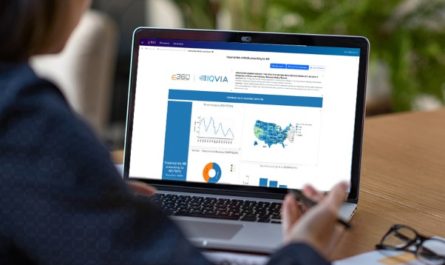Last Updated on August 23, 2022 by Sohail Qaisar
Master data lists are essential to master data management (MDM). By keeping track of all the various pieces of information that make up your master data, you can ensure that your MDM process is efficient and accurate. There are a few different ways to create master lists, and the best approach will vary depending on your specific needs. Here are seven standard methods Profisee uses in creating master lists.
One-time Import
A one-time import of master data is a process of consolidating data from multiple disparate sources into a single, unified view. This can be accomplished by using data cleansing and mapping tools that help standardize and merge data points. Once the data has been consolidated, it can be more easily managed and monitored.
A one-time import can be a helpful way to get a handle on master data that has become unmanageable due to its size or complexity. It can also be beneficial in ensuring that all stakeholders have access to accurate and up-to-date information. However, it is essential to note that a one-time import is not a cure-all solution for every organization’s master data management needs.
Manual Entry
Master data management (MDM) is a process of organizing and centralizing data in an organization. It can streamline processes, reduce errors and improve decision-making. One way to achieve this is by manually entering data into a system. This can be time-consuming and prone to mistakes, but it is a necessary step in ensuring that data is accurate and up to date.
MDM can also be used to automate tasks such as data entry, which can help to improve efficiency and reduce the risk of errors. By centralizing data and automating processes, MDM can help organizations to improve their decision-making and respond more quickly to changes in the market.
Data Cleansing
Data cleansing is identifying and correcting inaccuracies and inconsistencies in data. It is an essential part of data quality assurance, as it helps to ensure that data is accurate, consistent, and complete. Data cleansing can be performed manually or using automated tools.
Everyday cleansing tasks include identifying and removing duplicate records, standardizing formats, and correcting errors. Data cleansing is essential to master data management, as it helps ensure that the data used for decision-making is high quality. Data cleansing can improve decision-making accuracy, reduce costs, and improve customer satisfaction when done correctly.
Data Enrichment
Data enrichment is the process of combining multiple data sources to improve the quality of your master data. By leveraging external data sources, you can add valuable context to your data that can help improve decision-making, drive operational efficiencies, and identify new opportunities. While data enrichment can be complex and time-consuming, the benefits are well worth the effort. Enriching your master data can gain a competitive edge, drive better decision-making, and improve your bottom line.
Data Duplication
One of the most important aspects of effective data management is preventing duplication. Data Duplication can occur when information is entered incorrectly, multiple copies of the same file are created, or when two different systems contain conflicting information. While duplicate data can sometimes be useful, it is more often a hindrance than a help.
Duplicate data can lead to confusion and inaccuracies, making it challenging to find the information you need when you need it. To avoid these problems, it is vital to establish a clear system for managing your data. This may involve creating a central repository for all your data, setting strict rules for how information is entered and updated, and regularly auditing your records to ensure accuracy.
Data Quality Assessment
Data quality assessment is a process used to determine whether data is fit for purpose. It involves checking data accuracy, completeness, consistency, and validity. Data quality assessment can be used to assess both primary and secondary data. Primary data is collected directly from sources, such as surveys and interviews. Secondary data is data that has already been collected by someone else, such as census data. There are many different data quality assessment methods, but all involve some measurement.
Data quality assessment is an integral part of any research project, as it helps to ensure that the data used is robust and can be relied upon. Without good data, research findings may be inaccurate or misleading.
Data Governance
Master data management (MDM) is a governance and management discipline that deals with the consistent and uniform treatment of the most important enterprise data. MDM provides a single, 360-degree view of an entity, ensures that critical data is consistently captured and maintained, and makes it possible to apply business rules uniformly across the enterprise.
Data governance is the umbrella term that encompasses all activities related to data management, including MDM. Data governance includes the processes, policies, controls, and standards that ensure data is appropriately managed throughout its lifecycle. It ensures that data is high quality, is fit for purpose, and is consistently used across the enterprise. Data governance provides the framework within which MDM operates.
Final thoughts
Master data management is a complex process, but it is essential for businesses that want to optimize their data. By following the tips above, you can create master lists that are organized, accurate, and fit for purpose. Implementing effective MDM can be challenging, but the rewards are well worth the effort. You can make better decisions, improve operational efficiencies, and gain a competitive edge with good data at Profisee.


